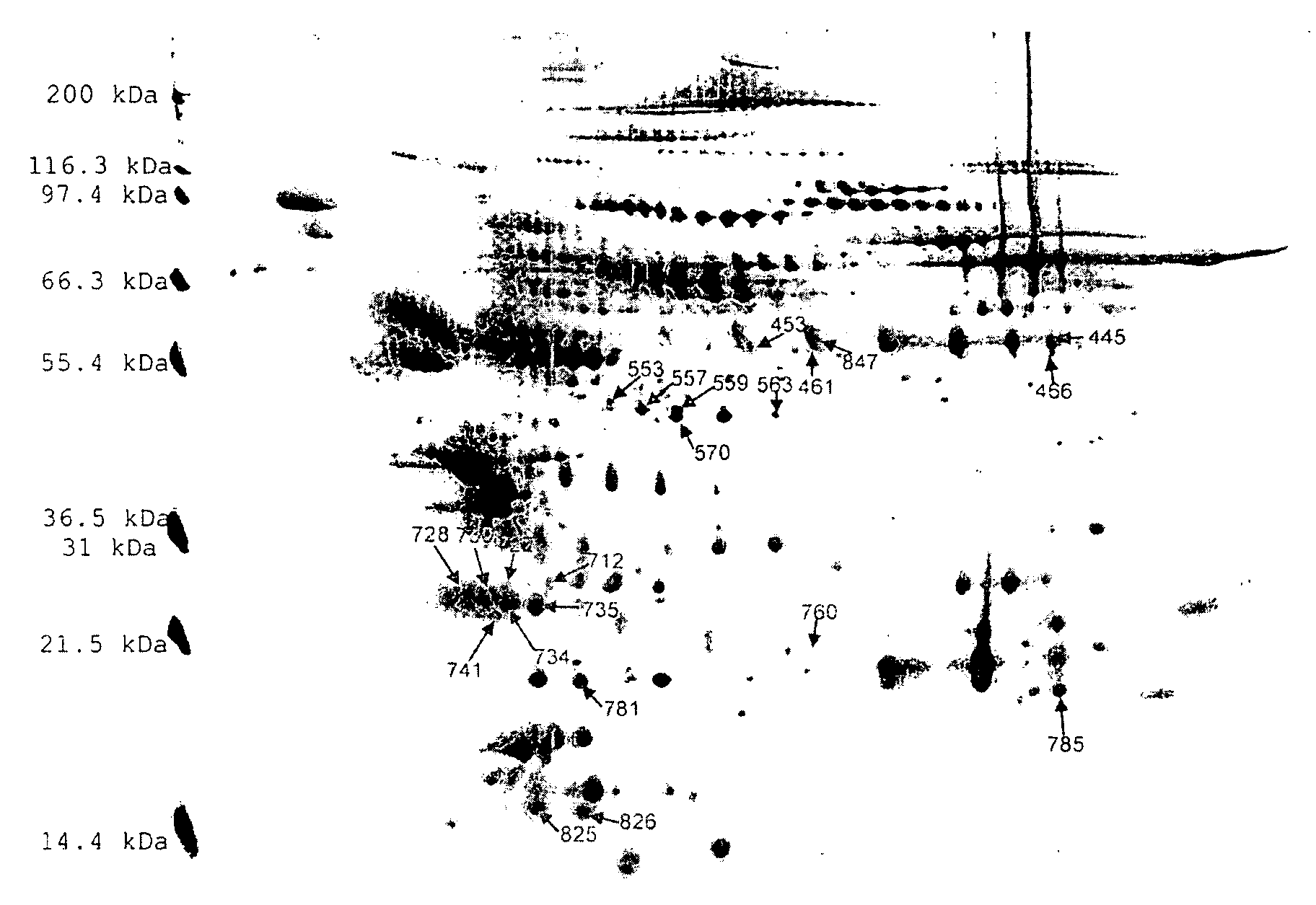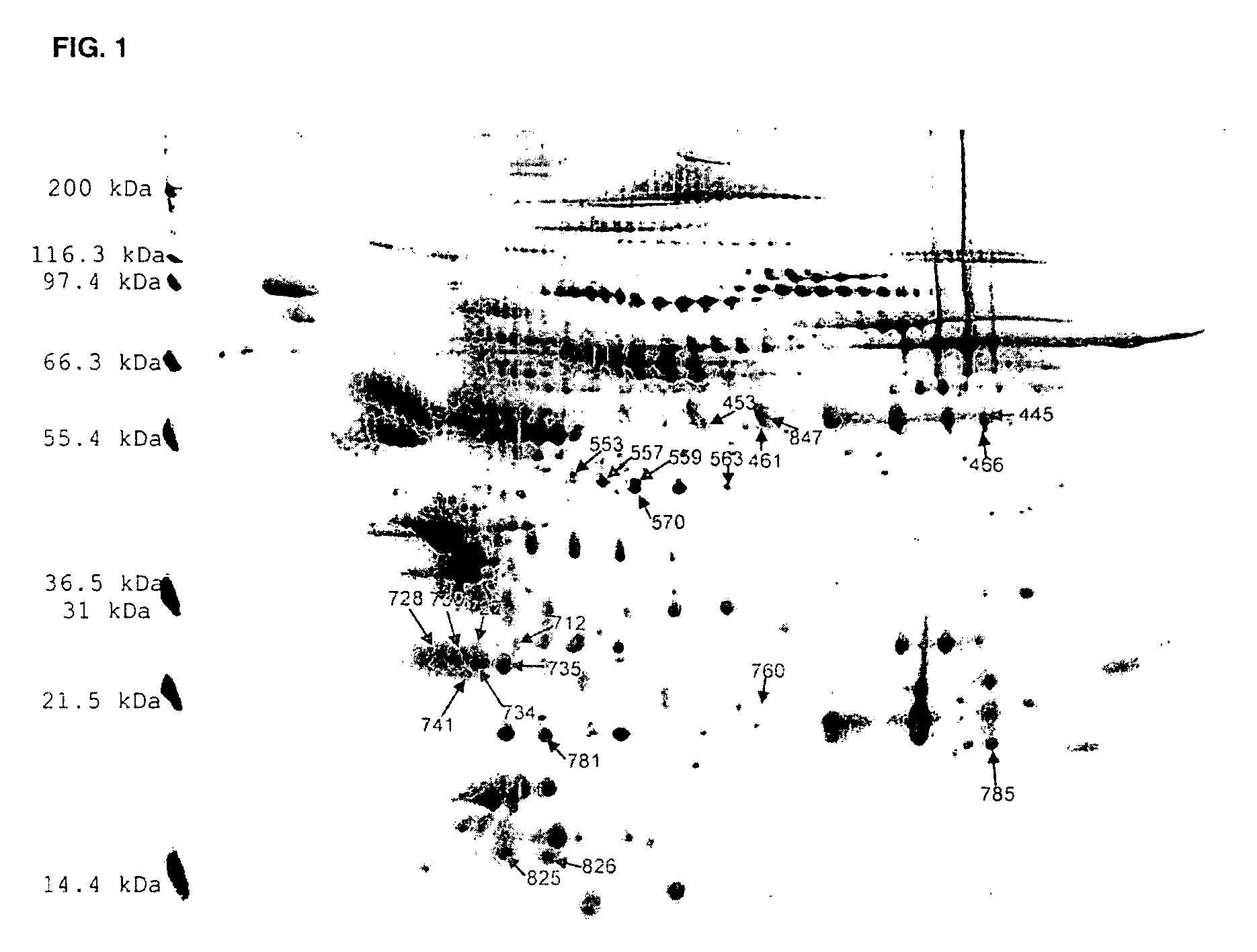Markers of Renal Transplant Rejection and Renal Damage
a technology of kidney transplant and marker, applied in the field of marker of renal transplant rejection and renal damage, can solve the problems of kidney transplant failure, methods, including clinical presentation and biochemical organ function parameters, often fail to detect rejection
- Summary
- Abstract
- Description
- Claims
- Application Information
AI Technical Summary
Benefits of technology
Problems solved by technology
Method used
Image
Examples
Embodiment Construction
[0093]Renal damage may arise from, for example, transplant rejection, disease, toxicity and ischemic injury.
[0094]Renal transplant rejection is preferably chronic rejection, usually defined as rejection occurring six months or more after the transplant. Rejection may also be acute rejection, usually defined as rejection occurring up to six months after the transplant.
[0095]Disease may include Alport's Syndrome, Amyloidosis, Diabetes and the kidney, Fabry Disease, Focal and segmental Glomerulosclerosis (FSGS), Henoch-Schonlein purpura, Iga nephropathy (Berger's disease), Infantile Polycystic Disease, Kidney Stones, Haematuria Syndrome, Lupus and Lupus Kidney Disease, Membranoproliferative Glomerulonephritis (MPGN), Microscopic Polyarteris, Minimal Change Nepropathy, Reflux nephropathy, Renal artery stenosis, Vasculitis, Vesico-Ureteric Reflux and Wegeners granulomatosis
[0096]Toxicity may be, for example, a side effect of drug treatment.
Marker Protein
[0097]The marker prote...
PUM
 Login to View More
Login to View More Abstract
Description
Claims
Application Information
 Login to View More
Login to View More - R&D
- Intellectual Property
- Life Sciences
- Materials
- Tech Scout
- Unparalleled Data Quality
- Higher Quality Content
- 60% Fewer Hallucinations
Browse by: Latest US Patents, China's latest patents, Technical Efficacy Thesaurus, Application Domain, Technology Topic, Popular Technical Reports.
© 2025 PatSnap. All rights reserved.Legal|Privacy policy|Modern Slavery Act Transparency Statement|Sitemap|About US| Contact US: help@patsnap.com



